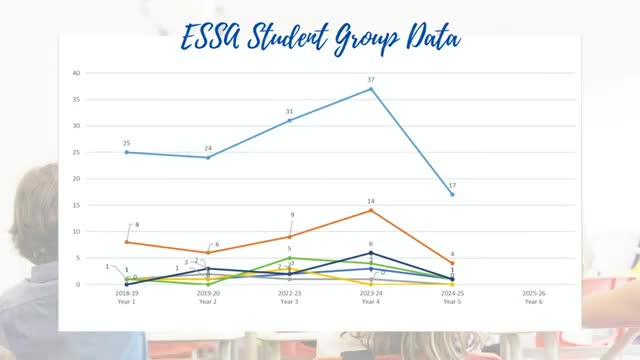Schools Celebrate Major Gains in Student Performance
August 21, 2024 | Sarasota, School Districts, Florida
This article was created by AI summarizing key points discussed. AI makes mistakes, so for full details and context, please refer to the video of the full meeting. Please report any errors so we can fix them. Report an error »

In a recent government meeting, officials celebrated significant progress in educational outcomes for students with disabilities in Sarasota County. The number of schools identified by federal standards as not making adequate progress for this subgroup dropped dramatically from 37 to 17 over the past year, indicating a positive trend in closing the achievement gap.
The meeting highlighted the implementation of impact reviews and tailored intervention strategies as key factors in this improvement. These reviews allow educators to analyze student data closely and develop personalized plans to ensure that each child can achieve a year’s worth of academic growth within the school year. The district is committed to monitoring students who are not yet proficient and providing necessary support to help them catch up.
Officials also discussed the federal designations for schools that require additional support, including Additional Targeted Support and Improvement (ATSI) and Comprehensive Support and Improvement (CSI). Schools that have struggled for six consecutive years with specific subgroups face stringent oversight and intervention from the state. Currently, the district is actively working to reduce the number of schools under these designations.
In addition to addressing the needs of district-managed schools, the district plans to extend support to charter schools, recognizing disparities in performance. A meeting scheduled for next week aims to share data and best practices with charter school leaders, encouraging them to adopt successful strategies used in district-managed schools.
The meeting concluded with a review of academic achievements across various subjects, noting significant gains in English Language Arts, math, science, and social studies. Several schools reported increases of ten or more points in proficiency and learning gains, particularly among students in the lower quartile.
As the district moves forward, officials expressed a commitment to continuous improvement and collaboration, emphasizing the importance of responsive instructional practices to meet the diverse needs of all students.
The meeting highlighted the implementation of impact reviews and tailored intervention strategies as key factors in this improvement. These reviews allow educators to analyze student data closely and develop personalized plans to ensure that each child can achieve a year’s worth of academic growth within the school year. The district is committed to monitoring students who are not yet proficient and providing necessary support to help them catch up.
Officials also discussed the federal designations for schools that require additional support, including Additional Targeted Support and Improvement (ATSI) and Comprehensive Support and Improvement (CSI). Schools that have struggled for six consecutive years with specific subgroups face stringent oversight and intervention from the state. Currently, the district is actively working to reduce the number of schools under these designations.
In addition to addressing the needs of district-managed schools, the district plans to extend support to charter schools, recognizing disparities in performance. A meeting scheduled for next week aims to share data and best practices with charter school leaders, encouraging them to adopt successful strategies used in district-managed schools.
The meeting concluded with a review of academic achievements across various subjects, noting significant gains in English Language Arts, math, science, and social studies. Several schools reported increases of ten or more points in proficiency and learning gains, particularly among students in the lower quartile.
As the district moves forward, officials expressed a commitment to continuous improvement and collaboration, emphasizing the importance of responsive instructional practices to meet the diverse needs of all students.
View full meeting
This article is based on a recent meeting—watch the full video and explore the complete transcript for deeper insights into the discussion.
View full meeting